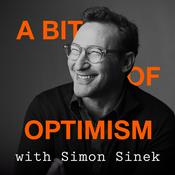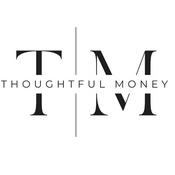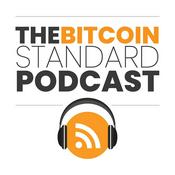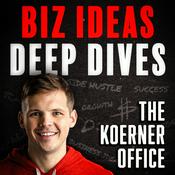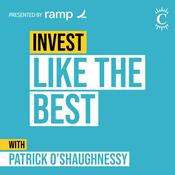686 episodes

Client Says: "I'm Not Ready To Commit" - Sales Influence Podcast - SIP 606
2025/12/17 | 11 mins.
Qualifying Real Objections When a client says they're not ready to commit, immediately funnel them into two specific categories: either they have product uncertainty (concerns about the product itself) or they have lack of information (missing details needed to make an informed decision). A client requesting a formal proposal and time to think signals they're not ready to buy from you specifically—they may still buy from a competitor, so avoid wasting time on deals that won't close with you. Pre-Proposal Qualification Before investing time in creating a formal proposal, ask the client directly if they have product uncertainty or lingering questions/concerns—their response reveals whether they're a serious prospect worth pursuing further. Push for specific information on their exact product concerns or information gaps rather than accepting vague "not ready" responses—this uncovers their true needs and objections. Tactical Communication Approach Slow down your speech and lower your tone when asking about specific concerns, using sincere curiosity instead of directly asking "why aren't you ready to commit"—this delivery method proves more effective at extracting real objections. Reengage clients by asking about specific product features they need or information they lack to feel comfortable committing—this directly addresses their concerns and moves the sale forward.

Don't Be An Unpaid Consultant - Sales Influence Podcast - SIP 605
2025/12/05 | 8 mins.
Prospect Qualification Framework Use the BANT model (Budget, Authority, Need, Timing) to qualify prospects upfront by asking direct questions like "When do you plan to make a decision?" to confirm you're engaging with a legitimate buyer who possesses both resources and authority to commit. Information Protection Strategy Protect your expertise from information hunters by discussing only the what and why of your solution while withholding the how until a formal proposal is presented, preventing prospects from extracting your insights to leverage better deals with competitors. Recognize red flags when prospects repeatedly request additional information, case studies, or meeting summaries—these behaviors indicate they're gathering intelligence rather than preparing to make a buying decision. Buyer Engagement Assessment Evaluate buying signals beyond verbal questions by monitoring the prospect's tone of voice, body language (in face-to-face meetings), and overall engagement level to distinguish serious buyers from time-wasters. Cost of Poor Qualification Unqualified prospects consume hours through meetings and travel without purchasing, transforming salespeople into unpaid consultants who surrender their time, knowledge, and best pricing to buyers with no purchase intention who use this intelligence for vendor negotiations.

Create A Frictionless Experience - Sales Influence Podcast - SIP 604
2025/12/01 | 9 mins.
An excerpt from the Sales Influence Podcast features host Victor Antonio analyzing the true obstacles that prevent customers from making a purchase, regardless of need or budget. Antonio uses his own reluctance to buy a replacement computer to illustrate that consumer hesitation is often not due to a lack of money, time, or trust, but is instead the perceived mental effort of transitioning to a new product. This resistance is generated by the mental anguish and imagined fear of administrative tasks, such as transferring data, finding registration codes, and potentially updating or repurchasing software licenses. He defines this core hurdle as buying friction, emphasizing that it represents a significant switchover cost for the customer. The primary sales strategy proposed is that companies must actively reduce this friction—by offering seamless, guaranteed transfer services—to encourage rapid customer conversion and increase sales velocity.

3 Things Customers Want To Hear - Sales Influence Podcast - SIP 603
2025/11/24 | 9 mins.
The "Sales Influence Podcast" hosted by Victor Antonio, focuses on key factors customers and investors consider before making a purchase or investment. Antonio draws on concepts from Matt Hannannah's book, Consultative Selling, to highlight a "new trinity" of questions that buyers want answered: how much the investment will cost (including money, time, and effort), how fast they will see a return of capital (the break-even point), and how often they will see a return on capital (the resulting profit). The podcast emphasizes the need for sales professionals to quantify this value to assist their "champions" in securing internal buy-in, offering a concrete example of calculating investment costs, break-even time, and long-term profit for an enterprise software solution.

Get Customers Cheap - Sales Influence Podcast - SIP 602
2025/11/18 | 9 mins.
Business Viability Formula Customer acquisition cost must be lower than lifetime value to ensure business success—this single equation determines whether a company will survive or fail according to Kevin O'Leary from Shark Tank. 8 out of 10 businesses fail within the first 36 months primarily because they spend more on client acquisition than the return on investment they receive from those clients. Customer Economics Calculation Calculate lifetime value by analyzing purchase frequency and average order value over a defined period like 3 years—for example, a customer spending an average of $20,000 over 3 years represents their total lifetime value. Over 90% of people cannot calculate their customer acquisition cost, yet knowing this metric and comparing it to lifetime value is essential for creating an effective marketing strategy. Growth Strategy Reduce customer acquisition cost while increasing lifetime value through product expansion and service bundling to create a winning sales strategy that attracts investors.
More Business podcasts
Trending Business podcasts
About Sales Influence Podcast
Listen to Sales Influence Podcast, A Bit of Optimism and many other podcasts from around the world with the radio.net app
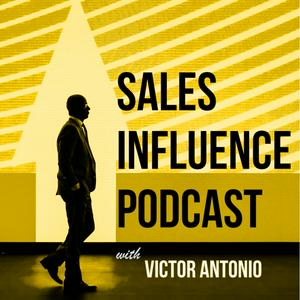
Get the free radio.net app
- Stations and podcasts to bookmark
- Stream via Wi-Fi or Bluetooth
- Supports Carplay & Android Auto
- Many other app features
Get the free radio.net app
- Stations and podcasts to bookmark
- Stream via Wi-Fi or Bluetooth
- Supports Carplay & Android Auto
- Many other app features


Sales Influence Podcast
download the app,
start listening.
